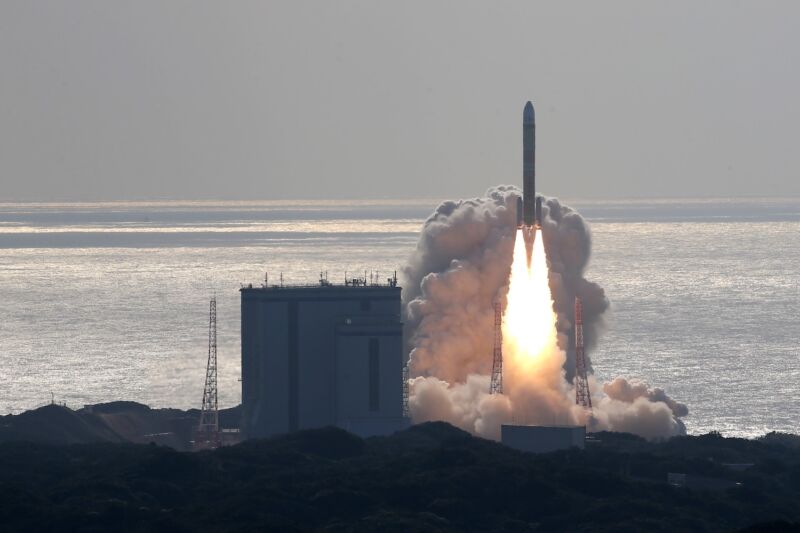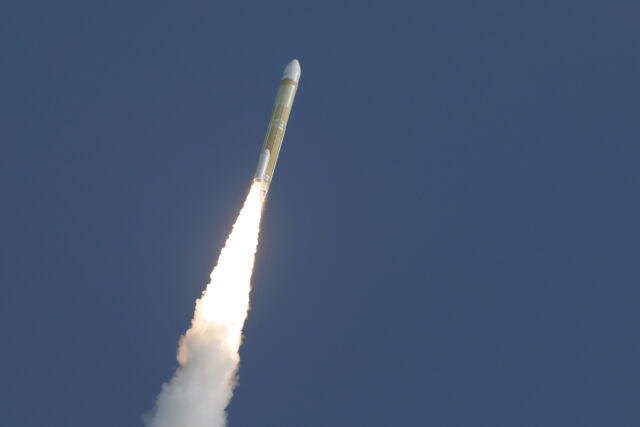
Japan’s new H3 rocket took off Friday on its second test flight; its success is an important milestone for the launch vehicle poised to power nearly all of the Japanese space program’s missions into orbit over the next decade.
The 187-foot-tall (57-meter) H3 rocket lifted off from the Tanegashima Space Center in southwestern Japan at 7:22 pm EST Friday (00:22 UTC Saturday) with a dummy payload and two smaller satellites.
Two hydrogen-fueled main engines and a pair of strap-on solid rocket boosters ignited with 1.6 million pounds of thrust, vaulting the H3 rocket off its launch pad on a trajectory east from Tanegashima, then south over the Pacific Ocean. The strap-on boosters burned out and jettisoned about two minutes into the flight, and the core stage’s LE-9 engines fired for nearly five minutes.
After releasing the first stage to fall into the Pacific, the H3’s second stage lit a single LE-5B engine, also burning liquid hydrogen and liquid oxygen, for an 11-minute burn to accelerate the rocket to orbital velocity. Once in orbit, the H3 deployed an Earth-imaging microsatellite for Canon Electronics and a small Japanese CubeSat to test an infrared Earth observation sensor in space.
The H3 rocket circled Earth one time before reigniting its upper-stage engine for a braking maneuver to bring it back into the atmosphere, where it was expected to burn up during reentry a couple of hours after liftoff. Before falling back to Earth, the upper stage tested its payload separation mechanism with a dummy payload called VEP-4, a nearly 3-ton metallic column aboard the rocket to simulate the mass of a medium-size satellite.
Success, at last
Officials from the Japan Aerospace Exploration Agency (JAXA) were thrilled with the outcome of the test flight. Publicly available US military tracking data indicated the rocket reached an orbital altitude of approximately 420 miles (680 kilometers), with an inclination of 98.1 degrees to the equator, right on target.
“The H3 finally gave its first cry. The launch was a perfect success,” said Masashi Okada, JAXA’s H3 project manager, according to a report by Japan’s Mainichi Shimbun newspaper.
The Japanese government approved development of the H3 rocket in 2013, and the program has cost approximately 220 billion yen (nearly $1.5 billion). JAXA funded most of the cost, while Mitsubishi Heavy Industries (MHI) serves as prime contractor for the H3 rocket. MHI will also take over commercial management of the H3 program.
The H3’s first launch into orbit follows another milestone Japan’s space program achieved last month, when the country’s robotic SLIM lunar lander touched down on the Moon. This made Japan the fifth nation to accomplish a soft landing on the lunar surface.
“We are very happy to see such great achievements in the space field following the successful SLIM moon landing,” Japanese Prime Minister Fumio Kishida wrote in a post on X. “I would like to express my respect for the efforts of everyone involved over the years and hope that Japan’s core rockets will continue to steadily accumulate achievements.”

Once in operational service, the H3 rocket will launch Japanese scientific satellites, solar system exploration missions, navigation satellites, spy satellites, and resupply freighters to the International Space Station. Japanese officials also want the H3 to compete for commercial launch business on the global market, but there’s stiff competition for commercial launch contracts. SpaceX dominates the commercial launch market, and a bevy of new rockets are joining the competition.
So far, the H3 hasn’t made much of a mark in the global launch market. Nevertheless, the H3 is critical for the future of Japan’s space program. It is cheaper and more capable than Japan’s workhorse H-IIA rocket, which is due for retirement after more than 20 years in service.

